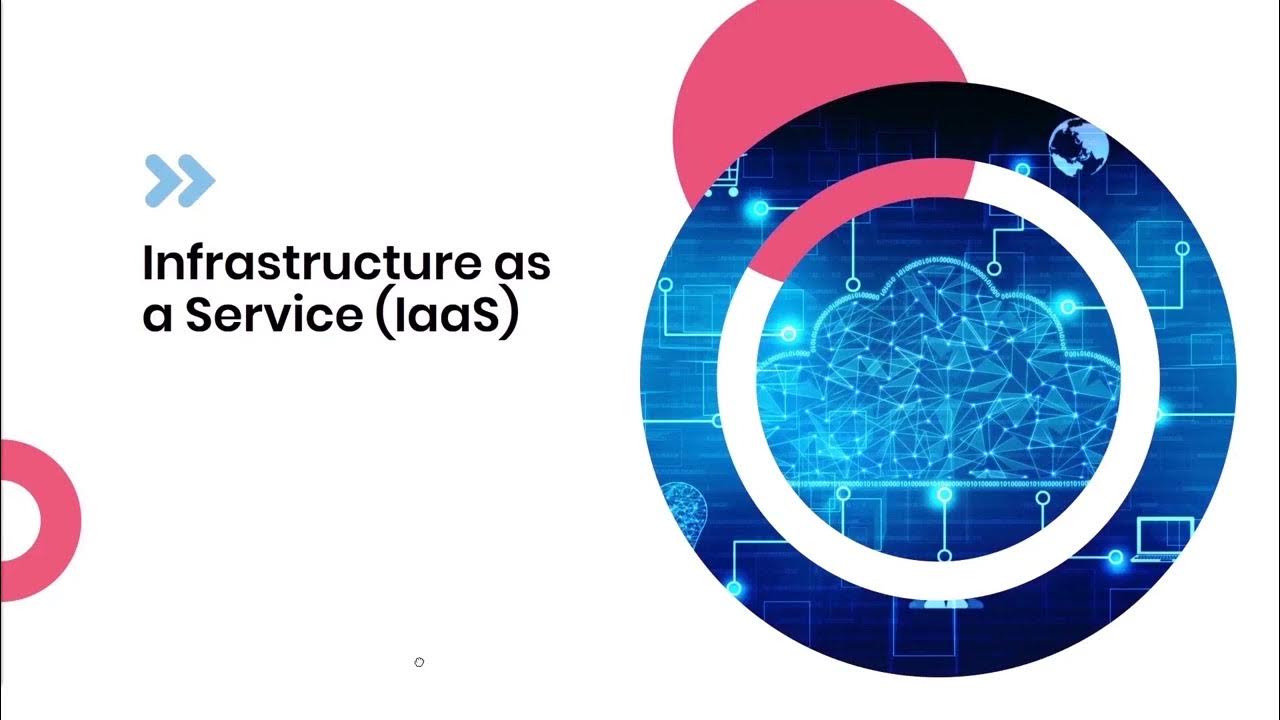IaaS, PaaS, and SaaS
Summary
TLDRThis video script covers the evolution of cloud computing, focusing on IaaS, PaaS, and SaaS. It explains the differences between infrastructure and platform services, with IaaS providing raw computing resources and PaaS enabling application-focused code deployment. The script highlights the shift toward managed services and serverless computing, where infrastructure management is eliminated. Additionally, SaaS applications like Gmail and Google Drive are discussed as cloud-based services accessed via the internet. The content emphasizes how these technologies allow businesses to focus more on their goals while delivering services efficiently.
Takeaways
- 😀 IaaS (Infrastructure as a Service) provides raw compute, storage, and network capabilities, similar to physical data centers.
- 😀 PaaS (Platform as a Service) binds code to libraries that grant access to infrastructure, allowing more focus on application logic.
- 😀 In the IaaS model, customers pay for allocated resources upfront, whereas in the PaaS model, customers pay for the resources they actually use.
- 😀 Cloud computing has evolved towards managed infrastructure and services, enabling companies to focus more on business goals and less on technical maintenance.
- 😀 Managed resources and services allow faster and more reliable delivery of products and services to customers.
- 😀 Serverless computing eliminates the need for infrastructure management, enabling developers to focus on code instead of server configuration.
- 😀 Google's Cloud Run allows customers to deploy containerized, microservices-based applications in a fully managed environment.
- 😀 Cloud Run Functions is a serverless, pay-as-you-go service for managing event-driven code.
- 😀 SaaS (Software as a Service) applications are cloud-based and are consumed over the internet, not installed on local devices.
- 😀 Google's popular applications like Gmail, Docs, and Drive are examples of SaaS, collectively known as Google Workspace.
Q & A
What are IaaS, PaaS, and SaaS?
-IaaS (Infrastructure as a Service), PaaS (Platform as a Service), and SaaS (Software as a Service) are different types of cloud computing services. IaaS provides raw compute, storage, and network capabilities, while PaaS offers a platform for developers to bind code to libraries. SaaS involves applications hosted in the cloud, accessible directly over the internet by end users.
How does IaaS differ from PaaS?
-IaaS offers raw infrastructure resources such as compute, storage, and networking, allowing users to manage and control them. PaaS, on the other hand, provides a platform where developers focus on building applications, as the infrastructure is managed for them.
What is the primary cost difference between IaaS and PaaS?
-In the IaaS model, customers pay for the resources they allocate ahead of time, whereas in the PaaS model, customers only pay for the resources they actually use.
Why has there been a shift towards managed infrastructure and services?
-The shift towards managed infrastructure and services allows businesses to focus more on their goals and less on maintaining technical infrastructure. It leads to quicker and more reliable delivery of products and services.
What is serverless computing?
-Serverless computing is a cloud service model where developers can concentrate on writing code instead of managing infrastructure. The cloud provider handles server configuration and management, offering a more flexible and cost-efficient solution.
What are the key serverless technologies provided by Google?
-Google offers serverless technologies such as Cloud Run, which allows customers to deploy containerized microservices in a fully managed environment, and Cloud Run Functions, which manages event-driven code in a pay-as-you-go manner.
What is SaaS, and how does it work?
-Software as a Service (SaaS) refers to cloud-based applications that users access directly over the internet. These applications, such as Gmail, Docs, and Drive, are not installed locally but run in the cloud, providing services to end users.
How do SaaS applications differ from traditional software applications?
-SaaS applications are hosted in the cloud and accessed via the internet, unlike traditional software that is installed locally on devices. This eliminates the need for end users to manage installations or updates.
Can you give examples of Google SaaS applications?
-Examples of Google SaaS applications include Gmail, Google Docs, and Google Drive, which are part of Google Workspace and are accessed over the internet.
How does managed infrastructure impact business operations?
-Managed infrastructure reduces the burden of maintaining physical servers and software, allowing businesses to focus on their core operations. It enhances efficiency, reduces costs, and accelerates time to market.
Outlines

هذا القسم متوفر فقط للمشتركين. يرجى الترقية للوصول إلى هذه الميزة.
قم بالترقية الآنMindmap

هذا القسم متوفر فقط للمشتركين. يرجى الترقية للوصول إلى هذه الميزة.
قم بالترقية الآنKeywords

هذا القسم متوفر فقط للمشتركين. يرجى الترقية للوصول إلى هذه الميزة.
قم بالترقية الآنHighlights

هذا القسم متوفر فقط للمشتركين. يرجى الترقية للوصول إلى هذه الميزة.
قم بالترقية الآنTranscripts

هذا القسم متوفر فقط للمشتركين. يرجى الترقية للوصول إلى هذه الميزة.
قم بالترقية الآن5.0 / 5 (0 votes)






